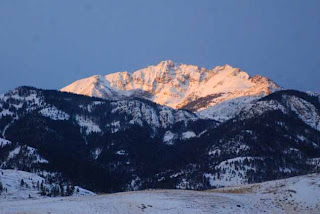Observing and
thinking.
You may have been hoping for something much more ‘flashy’. But to
truly observe and think, it takes work - a conscious effort.
Try to be more observant this year.... That doesn’t sound too difficult does it?The easy part is that it can be done anytime and anywhere. The hard part is that it takes a concerted effort to do it well enough to reap the benefits.
If you’re a painter, the benefits will be seen in your
painting. If you’re not in the habit of putting paint on canvas, you will feel
the benefits by appreciating the beauty around you and the natural world, in a
deeper way…."seeing the world through an artist’s eyes".
Plein air painting could be considered an extreme form of observing. While you are observing as intently as you possibly can, you are also trying to mix paint and get it on the canvas in the right spot.
So... some
very intent, focused observing, WITHOUT the added ‘distraction’ of mixing
paint, can be very beneficial.Plein air painting could be considered an extreme form of observing. While you are observing as intently as you possibly can, you are also trying to mix paint and get it on the canvas in the right spot.
You see painting the sunrise is tricky. Changes occur FAST
at that time of the day. With the light moving SO quickly and the color
temperatures changing RAPIDLY, getting the right colors mixed and on the
canvas, can feel mind boggling at times!
It can be a welcome opportunity to separate the observing
from the painting now and then. Give the observing ‘front stage’.
Observe and think without painting. But keep up the intensity and focus. Don’t
treat it like a spectator sport – become fully involved and absorbed in the
moment.
Compare the colors and tones, note the different shapes, the
way the light strikes the ground or object, the angle of the light, the colors
in the area of where the light meets the dark, where the colors transition... is
it an abrupt change or a soft blending, do you see reflected light anywhere,
where’s the darkest dark, the lightest light, the most intense color? Etc.
etc.
Make yourself REALLY LOOK. See it like you’ve never seen
before. By being able to observe at a less ‘frenzied’ pace than when I need to mix the paint and get it on the canvas too, it feels like there’s more time to let the information sink deeper into the brain. Hopefully, that stored information will be in the memory bank for when I do get out there. And a nice bonus, the acquired information and my improved observation skills cross over….coming in handy when studio and still life painting, too.
Since you’re always equipped with all the tools you need –
it fits into busy schedules nicely. There’s certainly not much ‘down time’ in
my life at this stage, so fitting it in with my exercise time works well for
me.
We have a treadmill with a great view of Yellowstone
National Park, the Yellowstone River and Electric Peak. PERFECT to observe the sun rise on Electric Peak. This morning there was a
lot of information to be had!
It’s hard to translate that firsthand information into
photos on a computer screen – (remember for a landscape painter there’s a reason for plein air
painting rather than just painting from photos. It’s NOT the same). But I'll
give it my best shot.
When the sun first hit Electric Peak this morning the color on the mountain had a very 'pink' quality to the sun lit snow. The snow shadows on the peak were quite blue. Compare the blue of the snow shadow to the blue sky....
When the sun first hit Electric Peak this morning the color on the mountain had a very 'pink' quality to the sun lit snow. The snow shadows on the peak were quite blue. Compare the blue of the snow shadow to the blue sky....
When the sun hit the front cliffs, look at the warm color compared to the back trees in shadow. The cliffs are much lighter in value and warmer in color than those trees. Also, observe the different value of the foreground trees compared to those background trees. What's the color difference?...
Look at the values - lights to darks. Compare the sunlit snow to the snow in shadow. A "general rule" is the sky is usually the lightest value - but snow throws 'the rules' off. Here, you can see the snow in the sunlight is a lighter value than even the sky.... You need the power of observation to see what's really happening, you can't just go by 'the rules'.
Added bonus....
An eagle stopped by during my workout. While we're observing like an artist - you can see that both the body of the eagle and the juniper trees in the background are a dark value, but what is the color difference? They are NOT the same.
That was my entertainment during my workout - observation practice.
For this discussion, I referred more to the natural world
with the changing light, but the concept applies to anything– inside, outside,
still objects, moving, anything will do. Whatever grabs your interest.
For pure observation skills, you can practice anywhere, anytime – from waiting rooms to road trips. Hope you manage to fit some 'intense observing' into your daily routines this year.
For pure observation skills, you can practice anywhere, anytime – from waiting rooms to road trips. Hope you manage to fit some 'intense observing' into your daily routines this year.






No comments:
Post a Comment